Eric Paquin
Congolese Swahili Machine Translation for Humanitarian Response
Mar 19, 2021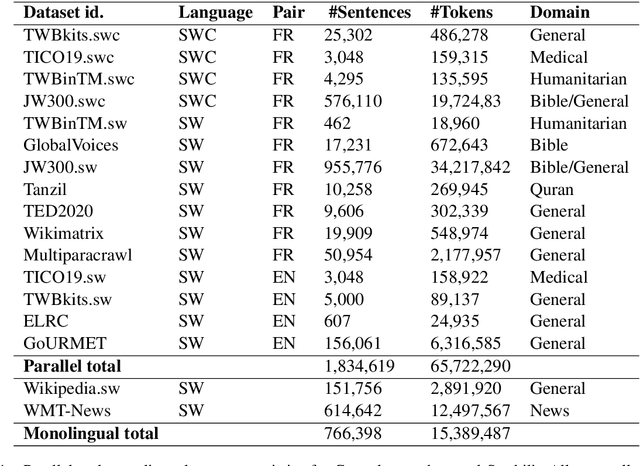
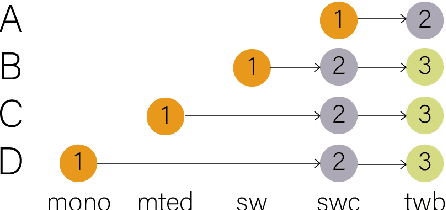
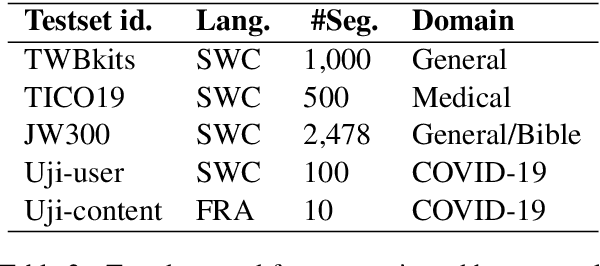
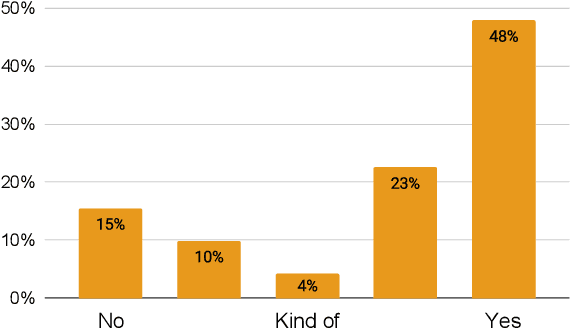
Abstract:In this paper we describe our efforts to make a bidirectional Congolese Swahili (SWC) to French (FRA) neural machine translation system with the motivation of improving humanitarian translation workflows. For training, we created a 25,302-sentence general domain parallel corpus and combined it with publicly available data. Experimenting with low-resource methodologies like cross-dialect transfer and semi-supervised learning, we recorded improvements of up to 2.4 and 3.5 BLEU points in the SWC-FRA and FRA-SWC directions, respectively. We performed human evaluations to assess the usability of our models in a COVID-domain chatbot that operates in the Democratic Republic of Congo (DRC). Direct assessment in the SWC-FRA direction demonstrated an average quality ranking of 6.3 out of 10 with 75% of the target strings conveying the main message of the source text. For the FRA-SWC direction, our preliminary tests on post-editing assessment showed its potential usefulness for machine-assisted translation. We make our models, datasets containing up to 1 million sentences, our development pipeline, and a translator web-app available for public use.
TICO-19: the Translation Initiative for Covid-19
Jul 06, 2020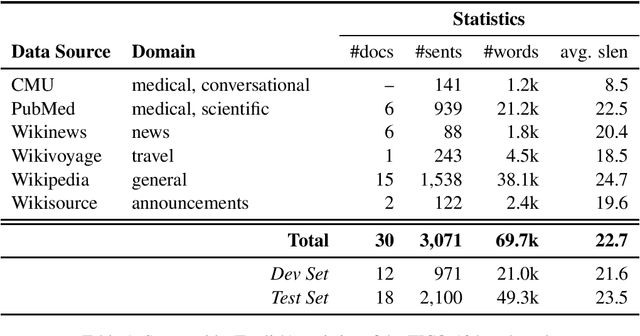
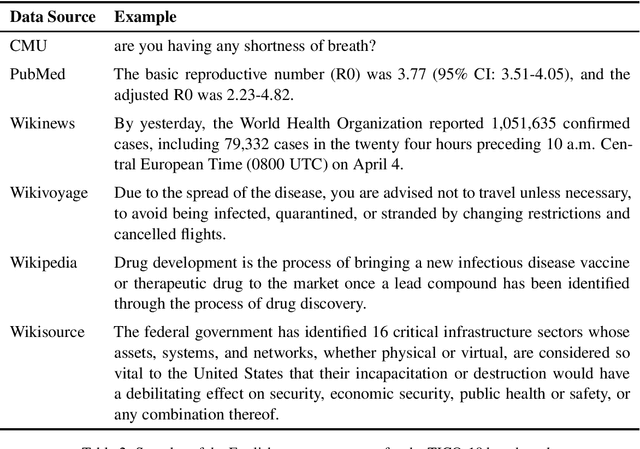
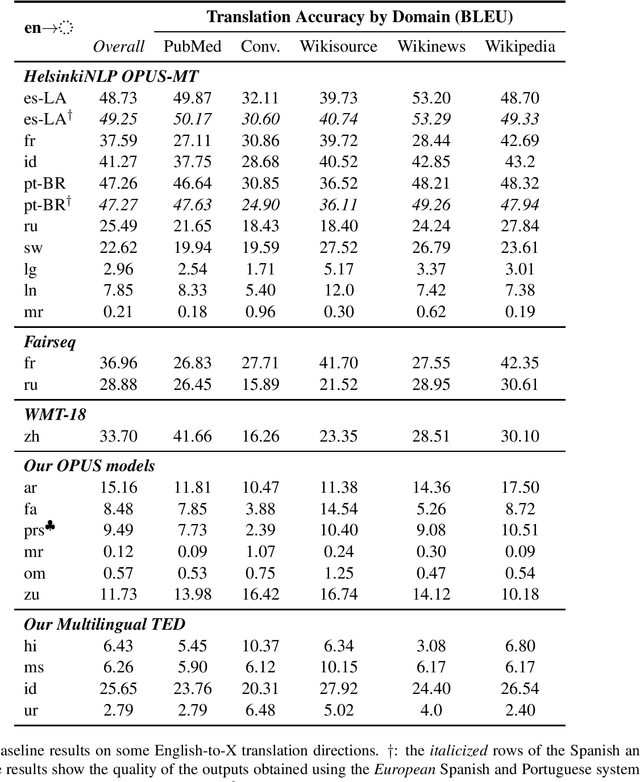
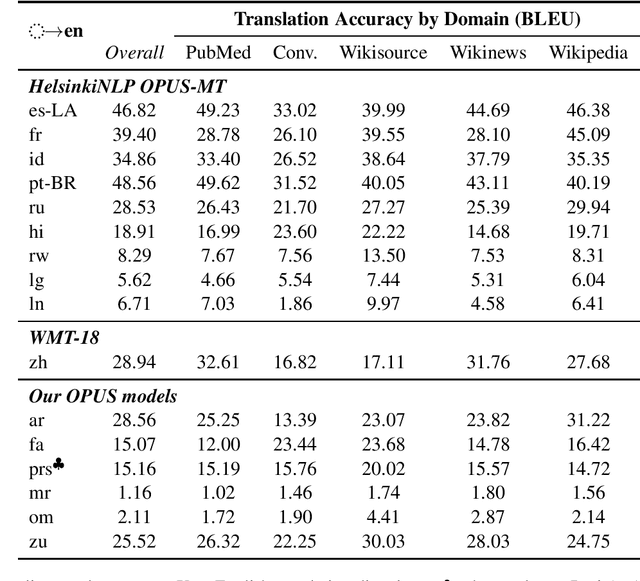
Abstract:The COVID-19 pandemic is the worst pandemic to strike the world in over a century. Crucial to stemming the tide of the SARS-CoV-2 virus is communicating to vulnerable populations the means by which they can protect themselves. To this end, the collaborators forming the Translation Initiative for COvid-19 (TICO-19) have made test and development data available to AI and MT researchers in 35 different languages in order to foster the development of tools and resources for improving access to information about COVID-19 in these languages. In addition to 9 high-resourced, "pivot" languages, the team is targeting 26 lesser resourced languages, in particular languages of Africa, South Asia and South-East Asia, whose populations may be the most vulnerable to the spread of the virus. The same data is translated into all of the languages represented, meaning that testing or development can be done for any pairing of languages in the set. Further, the team is converting the test and development data into translation memories (TMXs) that can be used by localizers from and to any of the languages.
 Add to Chrome
Add to Chrome Add to Firefox
Add to Firefox Add to Edge
Add to Edge